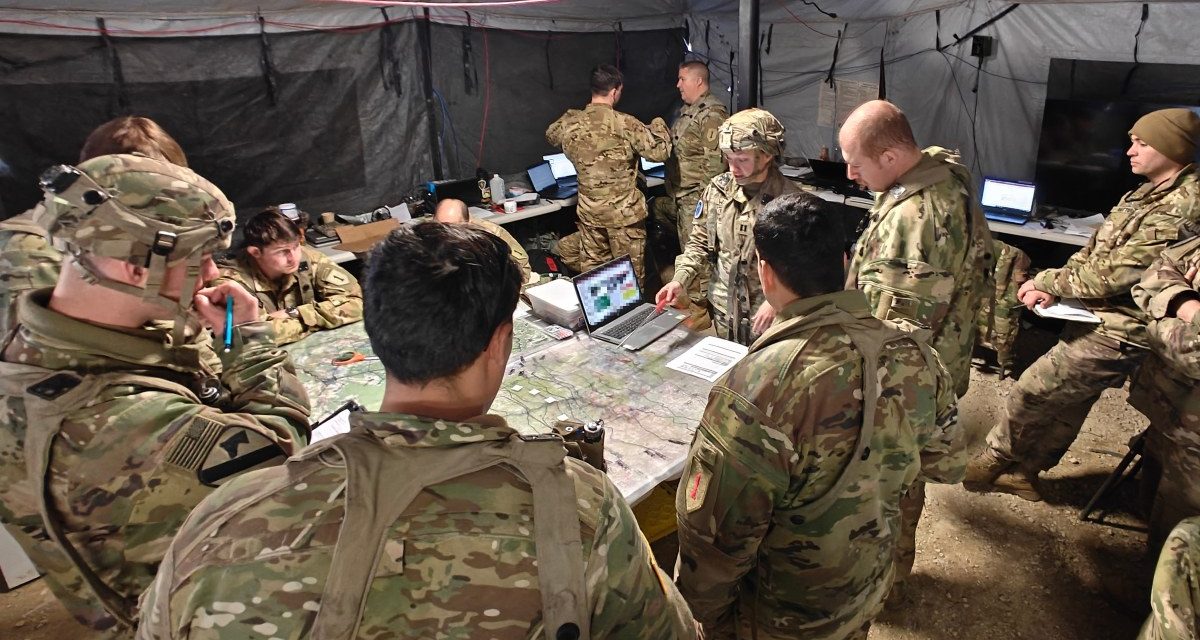Fabian Villalobos and Scott Savitz

Deception is as old as warfare. Ancient tales across cultures describe cunning and creative tactics, such as the Trojan Horse, employed to defeat adversaries. The deceiving force gains advantage by both confusing the adversary and preserving its combat power. Ultimately, deception is a critical combat enabler that requires deliberate planning, creative practitioners, and limited resources.
And yet, US military deception capabilities have been allowed to atrophy—despite the proven value of deception, which can be traced to the US military’s earliest operations. General George Washington’s surprise crossing of the Delaware during the American Revolution originally included a clever diversion. Allied deceptions in World War II caused German commanders to anticipate attacks in the wrong places, most notably leading them to concentrate forces at Calais when the Allies landed at Normandy.
Deception also enabled rapid victory with limited casualties during Operation Desert Storm. Intelligence indicated that Saddam Hussein expected an amphibious landing from the Persian Gulf and a drive north into Kuwait by coalition forces from Saudi territory. Capitalizing on that intelligence, the United States signaled this intent with decoys while disguising the movement of its forces to the west for a surprise “left hook” that cut off Iraqi forces within Kuwait. This induced the collapse, mass surrender, and flight of Iraqi forces within four days of ground combat. Deception planners used Magruder’s Principle—named for a general from the American Civil War—to reinforce Saddam Hussein’s preexisting beliefs to deceive him and achieve victory.
Despite the profusion of unmanned systems, satellite constellations, sensors, and other methods of tracking troop movement over the last thirty years, Magruder’s Principle and other deception techniques are still applicable today. Military forces must still deceive and assume they are being deceived. Ukraine demonstrated deception’s enduring relevance in November 2022, when it continually indicated that it planned to push against Russian forces in eastern Ukraine, then made a surprise thrust to the south.
Despite these demonstrations of deception’s continued value, the US military’s institutional preparedness to conduct deception operations has declined. As General Charles Q. Brown, now chairman of the Joint Chiefs of Staff, observed in 2019, “We’ve done some of these things in the past, in World War II, for example. It’s not something that we think about as much anymore.” That he made those comments and called for strengthening deception capabilities while serving as commander of Pacific Air Forces attests to their particular utility in modern operational environments characterized by potential adversaries’ antiaccess and area-denial systems. American dominance in conventional warfare has contributed to perceptions that deception is unnecessary, or is a technique for weaker powers. But successful deception activities enhance force protection, preserve combat power, and add complexity for the adversary—facts that are often underappreciated.
Today’s ubiquitous sensors make it harder to completely conceal forces. It is eminently possible, however, to exploit enemy sensor networks by providing them with false information. Deceptive techniques can include concealing real capabilities while projecting the existence of false ones, exaggerating the size of military forces, conveying false intentions, pretending to be in alternate locations, and fostering complacency through routine activity to mask a surprise attack.
Approaches like Magruder’s Principle play on the adversary’s psychological need for consistency. There are other ways to manipulate judgment as well that build on the psychological research of Amos Tversky, Daniel Kahneman, and others. For example, when people are exposed to a particular numerical value or interpretation of an image, they become anchored to it—meaning that they are reluctant to shift away from it. Providing false information early can cause an adversary to be hesitant to recognize real information even when it does emerge, as was the case for Saddam Hussein.
Successful deception requires ample preparation. Materiel, like tailored decoys and camouflage, must be on hand and ready to deploy. The importance of materiel capability should not be overemphasized, however; deception is ultimately about storytelling in ways that the adversary finds compelling, with materiel only a means to that end.
It’s personnel that are most essential. During World War II, the US and British deception efforts employed artists, directors, actors, fiction writers, and others to conjure and communicate audacious stories. Today’s geopolitical challenges likewise demand skilled and creative storytellers who are armed with detailed intelligence about US adversaries.
These storytellers would have to collaborate with military leadership to, first, refine ideas, and then to spread the deception. Synchronizing these efforts across multiple commands requires extensive coordination across the intelligence community and operators and must ensure resourcing is available to see a deception through.
All this will require practice. Deception programs should be regularly integrated into training programs and military exercises. That gives deception planners experience with conjuring and implementing elaborate ruses—and units experience with trying to recognize such deceit.
Few aspects of warfare are as valuable as efforts to deceive adversaries. The US military inevitably will face rivals who use deception to their advantage, so it should once again hone its own subterfuge skills—from the lowest levels, to gain a tactical edge, to the highest, to achieve strategic surprise. As Winston Churchill observed, in wartime, the truth is so precious that it must be protected by a bodyguard of lies.
No comments:
Post a Comment